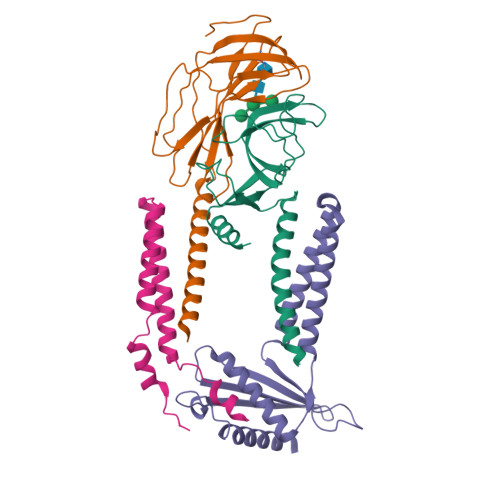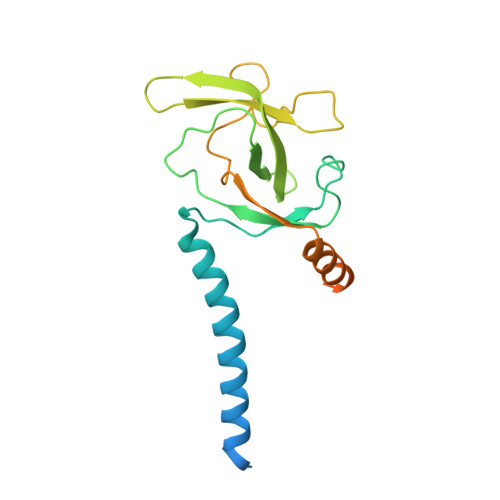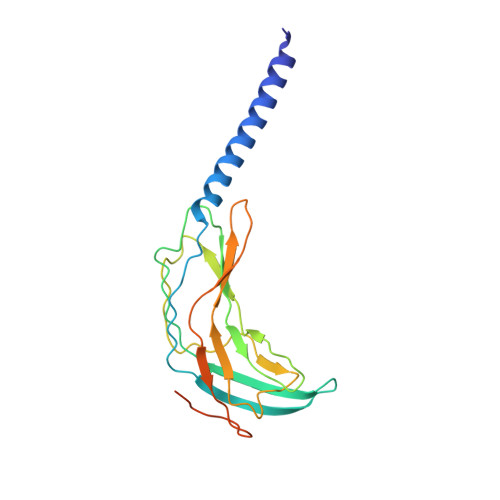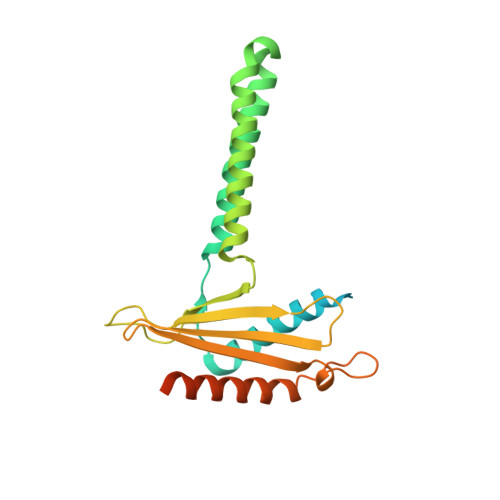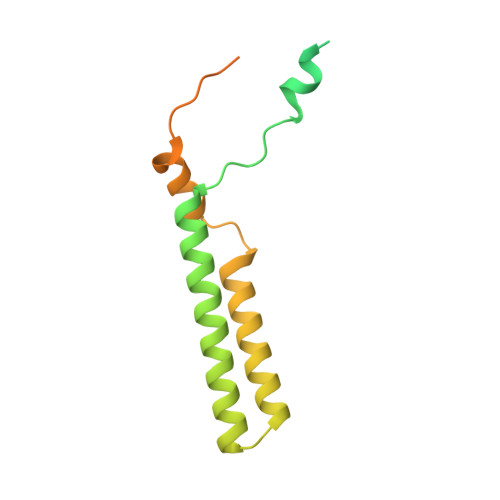Structure of the human signal peptidase complex reveals the determinants for signal peptide cleavage.
Liaci, A.M., Steigenberger, B., Telles de Souza, P.C., Tamara, S., Grollers-Mulderij, M., Ogrissek, P., Marrink, S.J., Scheltema, R.A., Forster, F.(2021) Mol Cell 81: 3934-3948.e11
- PubMed: 34388369
- DOI: https://doi.org/10.1016/j.molcel.2021.07.031
- Primary Citation of Related Structures:
7P2P, 7P2Q - PubMed Abstract:
The signal peptidase complex (SPC) is an essential membrane complex in the endoplasmic reticulum (ER), where it removes signal peptides (SPs) from a large variety of secretory pre-proteins with exquisite specificity. Although the determinants of this process have been established empirically, the molecular details of SP recognition and removal remain elusive. Here, we show that the human SPC exists in two functional paralogs with distinct proteolytic subunits. We determined the atomic structures of both paralogs using electron cryo-microscopy and structural proteomics. The active site is formed by a catalytic triad and abuts the ER membrane, where a transmembrane window collectively formed by all subunits locally thins the bilayer. Molecular dynamics simulations indicate that this unique architecture generates specificity for SPs based on the length of their hydrophobic segments.
Organizational Affiliation:
Structural Biochemistry, Bijvoet Centre for Biomolecular Research, Utrecht University, Universiteitsweg 99, 3584 CG, Utrecht, the Netherlands.








